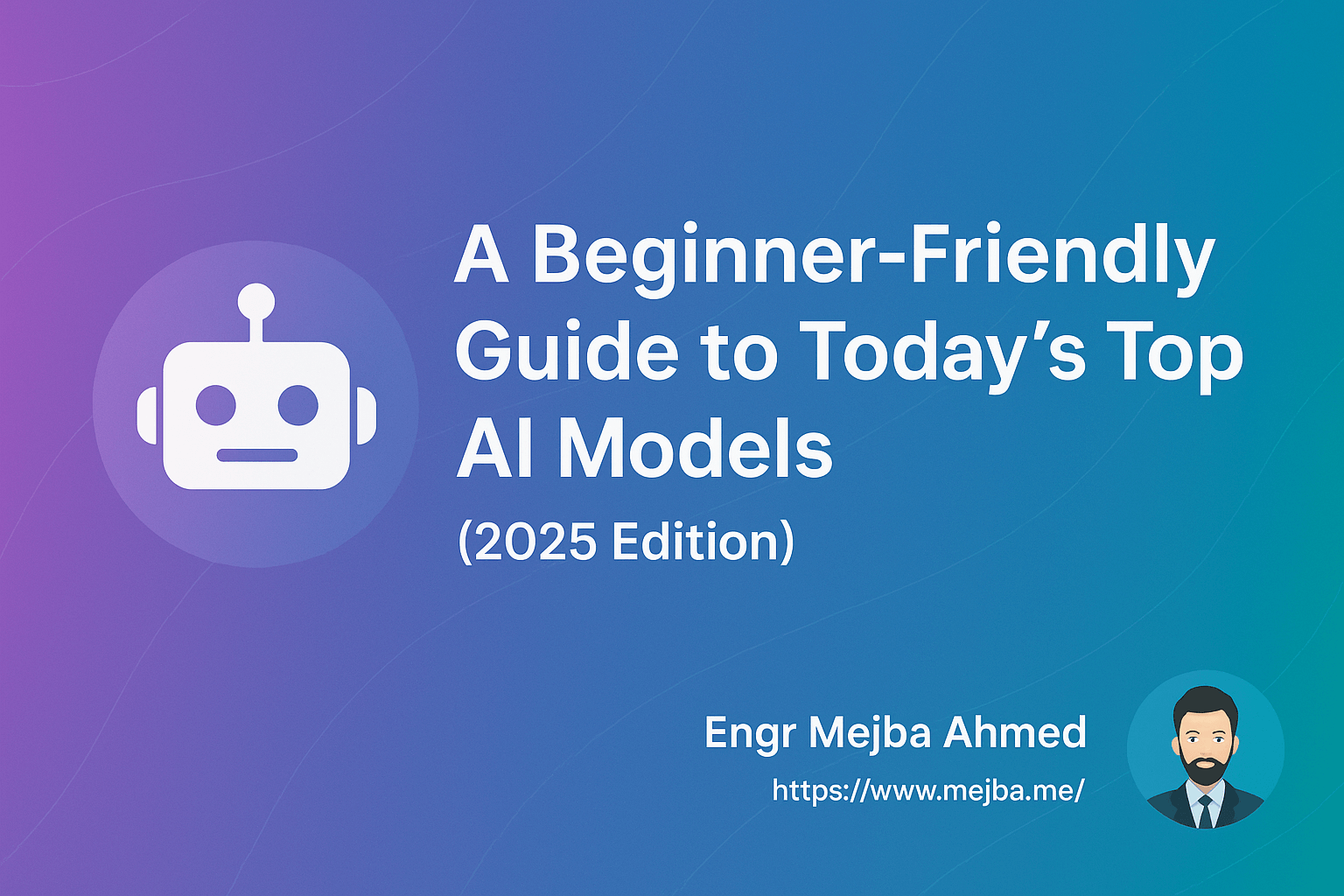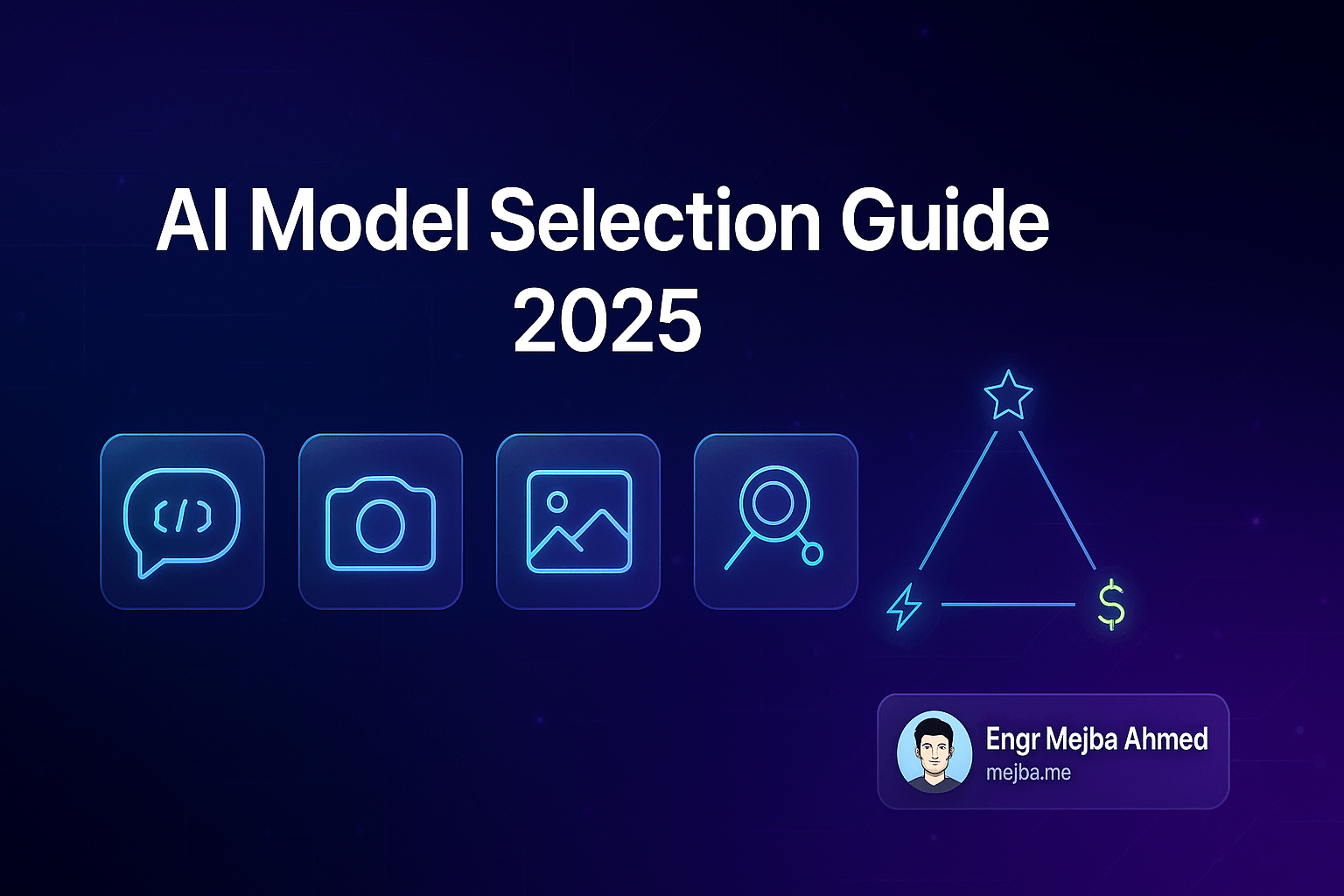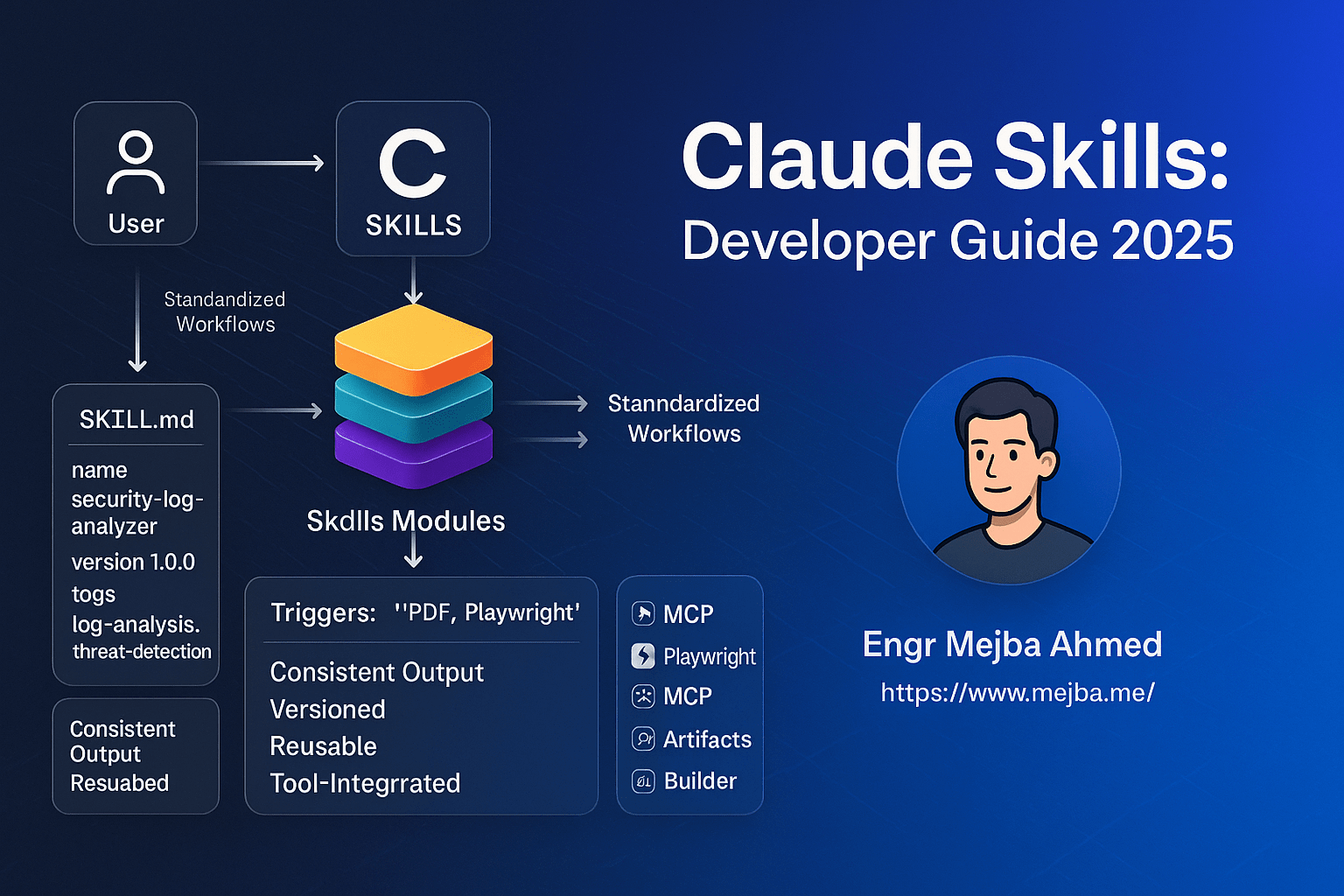A Beginner-Friendly Guide to Today’s Top AI Models (2025 Edition)
Welcome to the World of AI Tools in 2025
Artificial Intelligence is no longer just a buzzword — it’s everywhere. From creating art and writing blog posts to automating customer support and analyzing data, AI is transforming how we live and work. But with so many models and tools out there, it’s easy to get lost.
That’s why I created this beginner-friendly guide. Whether you're a curious reader, startup founder, digital marketer, or just getting into AI, this post breaks down the most popular AI models in 2025 — in simple, human language. No jargon, no confusion — just clear explanations of what each AI engine does, who made it, and how it helps.
Let’s explore the best AI models of 2025!
🤖 OpenAI GPT
Created by: OpenAI Best For: Writing, chatting, coding help, content generation
OpenAI GPT (Generative Pre-trained Transformer) is one of the most popular AI engines out there. It can chat with you, help write emails, generate blog content, write code, and more. It’s like having a really smart assistant that understands and responds in natural language. GPT is used in many apps and services to power conversations and smart replies.
🎨 DALL·E
Created by: OpenAI Best For: Creating images from text
DALL·E turns words into pictures. Just type something like “a cat riding a skateboard in space,” and DALL·E will draw it for you. It’s widely used by designers, marketers, and creatives who want to generate original images quickly and easily.
🧠 BERT
Created by: Google Best For: Understanding meaning in text (search engines, summaries, etc.)
BERT stands for “Bidirectional Encoder Representations from Transformers.” It's a smart model that helps machines understand the meaning behind your words. Google uses it to make search results better. In simple terms, BERT helps AI read between the lines.
🌸 BLOOM
Created by: BigScience (Hugging Face) Best For: Open-source text generation in multiple languages
BLOOM is like GPT but fully open-source and multilingual. It was trained by researchers around the world and can write or translate content in dozens of languages. It’s ideal for developers and researchers who want to build their own AI-powered tools.
🔍 DeepSeek
Created by: DeepSeek Best For: Advanced AI research and intelligent search
DeepSeek is designed to help machines understand and retrieve information more accurately. It’s used in research, knowledge management, and smart search tools. It’s perfect for anyone building apps that need fast, smart answers.
🦅 Falcon
Created by: Technology Innovation Institute (UAE) Best For: Language understanding and text generation
Falcon is a powerful, open-source language model known for its speed and performance. It’s often used in enterprise AI systems where scalability and privacy matter. Think of it as a high-speed engine for powering smart applications.
💬 FastChat
Created by: LMSYS Best For: Building fast, responsive chatbots
FastChat is designed to make AI conversations feel snappy and natural. Developers use it to build real-time customer support bots and virtual assistants. If you’ve chatted with a bot that replied in milliseconds — FastChat might be behind it.
🧩 Gemini
Created by: Google DeepMind Best For: Multimodal AI (understanding text, images, audio together)
Gemini is a next-gen AI that understands more than just words. It can combine text, images, and audio to give smarter responses. Imagine asking, “What’s in this photo?” and getting a full explanation — that’s Gemini in action.
🌀 Generative Adversarial Networks (GANs)
Created by: Ian Goodfellow (popularized by the research community) Best For: Creating ultra-realistic images, videos, and deepfakes
GANs are a special kind of AI that can “imagine” things. They’re behind those ultra-realistic fake photos and videos you may have seen. Creatives use GANs for art, fashion design, game development, and more.
🧠 Grok
Created by: xAI (Elon Musk’s AI company) Best For: Conversational AI with real-time web knowledge
Grok is a conversational AI that pulls knowledge from the web in real time. It’s designed to be witty, helpful, and always up to date. Think of it as a chatbot with internet superpowers — great for answering fresh questions.
🔗 LangChain
Created by: Harrison Chase & community Best For: Connecting AI models to tools, data, and APIs
LangChain helps developers connect AI to real-world apps. Want GPT to fetch live data or book an appointment? LangChain makes it possible. It’s like giving your AI model hands and legs to move around and get things done.
🦙 LLaMA
Created by: Meta AI (Facebook) Best For: Research and private AI use
LLaMA (Large Language Model Meta AI) is Meta’s powerful model for researchers. It’s lightweight, fast, and useful for those who want to run AI on their own servers without relying on big tech infrastructure.
🎨 MidJourney
Created by: MidJourney Inc. Best For: Artistic, stylized AI-generated images
MidJourney creates dreamy, beautiful images from simple text. Artists and marketers love it for its unique, almost hand-drawn style. If you’ve seen AI-generated artwork that looks like a painting — it was likely made with MidJourney.
🧮 MPT (MosaicML Pretrained Transformer)
Created by: MosaicML (acquired by Databricks) Best For: Customizable language models for enterprise use
MPT is a modular, scalable AI engine used to build custom applications. It’s often chosen by businesses who need tailored AI tools. It offers flexibility and performance for everything from customer support to data analysis.
🌐 MUM (Multitask Unified Model)
Created by: Google Best For: Smart search and multilingual understanding
MUM helps Google understand complex queries — even across languages. It can compare information, summarize articles, and provide better results. It’s the brain behind some of Google Search’s most intelligent features today.
🧠 RoBERTa
Created by: Facebook AI (Meta) Best For: Text classification, summarization, sentiment analysis
RoBERTa is an improved version of BERT. It reads and analyzes text more effectively, making it great for tasks like spam detection, review analysis, or automatic summarization.
🎨 Stable Diffusion
Created by: Stability AI Best For: Generating high-quality images from text prompts
Stable Diffusion lets anyone create artwork just by describing it. It’s fast, open-source, and runs on regular computers. People use it for ads, social media graphics, game design, and more.
🧠 TensorFlow
Created by: Google Best For: Building and training AI models
TensorFlow is not just a model — it’s a full toolkit for building AI systems. Developers and researchers use it to create everything from smart apps to medical AI. It’s one of the most widely used AI platforms in the world.
🧬 Variational Autoencoders (VAEs)
Created by: Research community Best For: Image generation and compression
VAEs are a kind of AI model that can compress data and generate new content, like faces or handwritten digits. They’re often used in research, data science, and creative projects that need flexible image generation.
Final Thoughts: Choosing the Right AI Engine for Your Needs
I’ve just explored some of the best AI tools of 2025 — each with its own purpose and strengths. Whether you're looking to automate tasks, build smarter apps, generate art, or explore creative possibilities, there’s an AI model out there for you.
The world of AI is growing fast, but don’t worry — you don’t need to be a tech wizard to take advantage of it. Start small, stay curious, and experiment. If you’re building a product, creating content, or just exploring how AI works, now’s the perfect time to dive in.
👉 Want to learn more about how these tools can power your business? Stay tuned for upcoming guides on “How to Use AI in Your Startup,” “Best AI Tools for Creatives,” and more.





